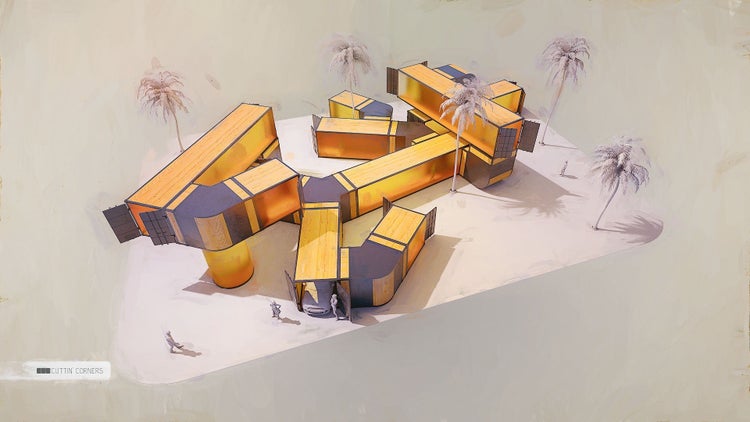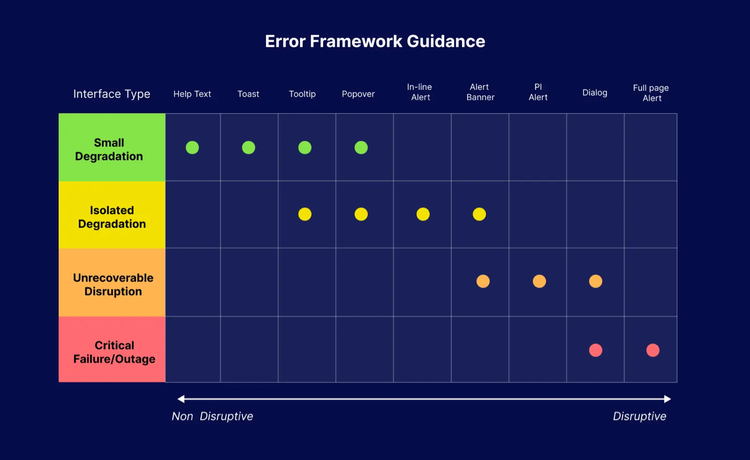Ask Adobe Design: What are the non-design skills you rely on in your work?
Five team members share the competencies outside of design that have helped shape their careers

Illustration by Eirian Chapman
While core skills and capabilities are critical for showcasing design expertise, they only comprise a very small part of what makes designers successful. We asked five designers from Adobe Design to share the non-design skills they rely on in their work, and how building on them has helped shape them into more well-rounded designers.
“Instead of accepting constraints, asking the right questions pushes boundaries, sparks innovation, and helps you think outside the box.”
Vicky Vo, Experience Designer, Growth
“Curiosity. More specifically, asking the right questions. Starting a new project, especially during kickoff, is the perfect time to dig deeper and inquire. At a large company like Adobe, where processes are often set, it’s easy to go with the flow and accept things as they are. But asking questions helps you understand a project’s context and the reasons behind earlier decisions. Instead of accepting constraints, asking the right questions pushes boundaries, sparks innovation, and helps you think outside the box.
“For example, when I recently joined a new team, I was trying to understand how the team had documented and delivered designs. However, it was a challenge to understand it simply by finding and looking at past projects. I started asking questions like, ‘What were the context and specifications behind this deliverable?,’ ‘Which are the latest files?,’ and ‘How can we improve the documentation process as we expand the team?’ Raising these questions helped me better understand the design documentation and delivery process the team had been using, and to make suggestions for how it could be smoother.
“In the end, the questions helped us create a better template for the team to use, which also set our standard of delivery, including accessibility, detail specs, and localization. It got into the details of how we name tabs, pages, and files so we can better manage version control—which has not only improved our design standard but have organized and future-proofed our files.”
“Having business acumen is crucial for better partnerships with stakeholders.”
Mili Sharma, Senior Design Manager, Document Cloud
“Having business acumen is crucial for better partnerships with stakeholders. As designers, it’s our role to advocate for users while creating exceptional in-product experiences, but I've discovered that thinking like a product owner—by understanding usage data, key metrics, and how the business operates—is equally important.
“Many times, design is considered a support team that helps execute the roadmap laid out by product managers. Designers who combine business thinking and design thinking can help change this mindset by driving strategy and defining a roadmap while advocating for product quality.
“One key lesson I’ve learned is the importance of asking for the right data and truly understanding it. Data helps us understand what’s being loved and what’s not, but I’ve also learned to not take it at face value. For example, designers can look at usage data to understand real user journeys and find drop-off points (which can help uncover the reasons behind those drop-offs), then they create a solution for the first biggest blocker that users come across. But if users leave before trying the feature, it doesn’t matter how much effort we put into making the feature great, because they won’t benefit from it. Consequently, this will not impact the business positively. When designers grasp how a product generates revenue, they can enhance user experiences by aligning business objectives more closely with user needs.”
“Playfulness provides a foundation for unbiased exploration and ideation.”
Tomasz Opasiński, Creative Technologist AI/ML, Machine Intelligence & New Technology
“Playfulness. Adopting a playful mindset is invaluable for any innovation or design-driven project. It provides a foundation for unbiased exploration and ideation. At its core, it’s an approach characterized by the continuous use of ‘What if?’ rather than the limiting ‘But!,’ which can hinder progress. Embracing this playful perspective has allowed me to reach new heights, uncover previously hidden opportunities, and often establish a clear north star direction with ease.
“For example, in a personal project, Project CüB, I delved into and celebrated various perspectives on shipping container home systems. I've come across many housing projects using shipping containers, from vacation homes to modular affordable housing and even some high-end designs. What struck me was how rigid and unimaginative many of them felt. Out of sheer curiosity, I started wondering if there was more that could be done with these containers—something that might make living in them more enjoyable.
“I began asking myself questions: ‘Could a container house be mobile if needed?,’ ‘Could it break away from the standard look we've come to expect?, and most importantly, ‘Could it be fun?’ I intentionally reimagined the world in a more playful and less realistic manner. What if my summer house could change locations throughout the day or be elevated to offer stunning views? What if there was a system that allowed me to connect multiple containers in a non-linear fashion? What if…? Be playful.”

“System mapping makes daunting problems with a ton of moving parts seem approachable and easier to tackle.”
Bushra Mahmood, Senior Design Manager, Spectrum
“The skill that’s had the greatest impact in my career is system mapping. Back in 2010 I worked with a visual effects artist who was not only masterful in design but brilliant at thinking in systems. They would take project briefs from clients and various data sets and map them in two ways: A binary coded table and a visual system map.
“These distinct outputs were complementary in grasping the vision and story in a linear and non-linear way. It felt daunting initially to create massive spreadsheets with so much raw information that had no immediate solutions—because as designers we value polished and functional outputs. But by understanding the big picture and all possible outcomes, we were always able to realistically set expectations, and establish priorities and timelines. It gave us room to visually experiment and play around and make outputs we were genuinely happy with.
“System mapping has been instrumental in my professional growth when facing large unfocused problems such as the start of a new product or switching from one established design system to another. It makes daunting problems with a ton of moving parts seem approachable and easier to tackle since we aren’t jumping into finding a solution right away but rather trying to better understand the problem. It also helps level set with key partners—by sharing what we understand to objectively be true and making sure we all have the same amount of information—before advocating for a single solution.
“Now as a manager, I depend on my team to also be able to system map to ensure that I have information from them that goes beyond surface level, to help guide or unblock whenever necessary. It also lets me advocate for their solutions by genuinely understanding the problem they’re trying to solve and making sure I can help fill in any addressable gaps.”

“Compassion has become crucial to the success of all my work.”
Andreas Kuefer, Principal Designer, Lightroom
“I call my skill the art of listening. Over the last ten-plus years, I’ve trained in being mindful, being present, and fully paying attention to others and to my own intuition. I’ve honed and practiced this skill through more than 5,000 hours of meditation and contemplation. I’ve attended week-long silent retreats, journeyed inwards with plant medicine, and graduated from the Academy of Intuition Medicine. The practice has changed my life—and it continues to impact and improve it.
“I practice this skill in all my work interactions—during conversations, brainstorming, and problem-solving—and it has transformed how I gather information, connect with coworkers and customers, and listen to other's opinions and viewpoints. It’s amazing how the world unfolds when you take the time to pay attention, listen, and sit still.”
“My core design skill of compassion has reached new heights, increasing the efficiency of my process and the quality of my contributions. It has become crucial to the success of all my work.”
Ask Adobe Design is a recurring series that shows the range of perspectives and paths across our global design organization. In it we ask the talented, versatile members of our team about their craft and their careers.